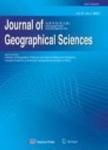版权所有:内蒙古大学图书馆 技术提供:维普资讯• 智图
内蒙古自治区呼和浩特市赛罕区大学西街235号 邮编: 010021

作者机构:Key Laboratory of Land Surface Pattern and Simulation Institute of Geographic Sciences and Natural Resources Research CAS University of Chinese Academy of Sciences CAS Center for Excellence in Tibetan Plateau Earth Sciences College of Biological and Geographic Sciences Qinghai Normal University
出 版 物:《Journal of Geographical Sciences》 (地理学报(英文版))
年 卷 期:2015年第25卷第7期
页 面:879-896页
核心收录:
学科分类:07[理学] 0705[理学-地理学] 070501[理学-自然地理学]
基 金:Strategic Priority Research Program of the Chinese Academy of Sciences,No.XDB03030500 The National Key Technology Research and Development Program,No.2013BAC04B02,No.2012BAC06B00 The Key Foundation Project of Basic Work of the Ministry of Science and Technology of China,No.2012FY111400
主 题:Tibetan Plateau wetland research in remote sensing
摘 要:About 80% of global wetland resources are degrading or disappearing; thus the wetland ecosystem has become one of the most seriously threatened ecosystems in the world. As an area sensitive to global changes and acting as a security barrier for the Asian ecosystem, the Tibetan Plateau has about 13.19× 10^2 of wetlands of special significance within China. With the increasing application of remote sensing technology to wetland research, Tibetan Plateau wetland research has entered a period of rapid development. This paper summarizes the remote sensing research literature of the Tibetan Plateau wetlands from 1992 to 2014, and is intended to provide references for future research into the wetlands of the Tibetan Plateau. We have reviewed monitoring methods, research topics, and existing problems. Our review has revealed the following characteristics: (1) Over the past 40 years, the research paradigm of the Tibetan Plateau wetlands has undergone dynamic changes in the monitoring of wetland areas, landscape patterns and the eco-environment based on re- mote sensing technology. Attention has also been focused on constructing models with an ecological system perspective and analyzing three patterns of change trends within the Tibetan Plateau wetlands. (2) The results of Tibetan Plateau wetland research based on remote sensing were as follows: (a) between 1970 and 2006, the Tibetan Plateau wetland area decreased overall at a rate of 0.23%/a, and the landscape diversity declined at a rate of 0.17%/a; (b) by contrast, between 1976 and 2009, the lake area of the inland river basins in the Tibetan Plateau increased at a rate of 0.83%/a; and (c) the change trend in the Tibetan Plateau wetlands was controlled by climate change. Current problems relating to remote sensing (RS)-based research in the Tibetan Plateau wetlands are computer interpretation accuracy and the processing precision of cloud removal, and the lack of a comprehensive overview of the Tibetan Plateau wetland syst